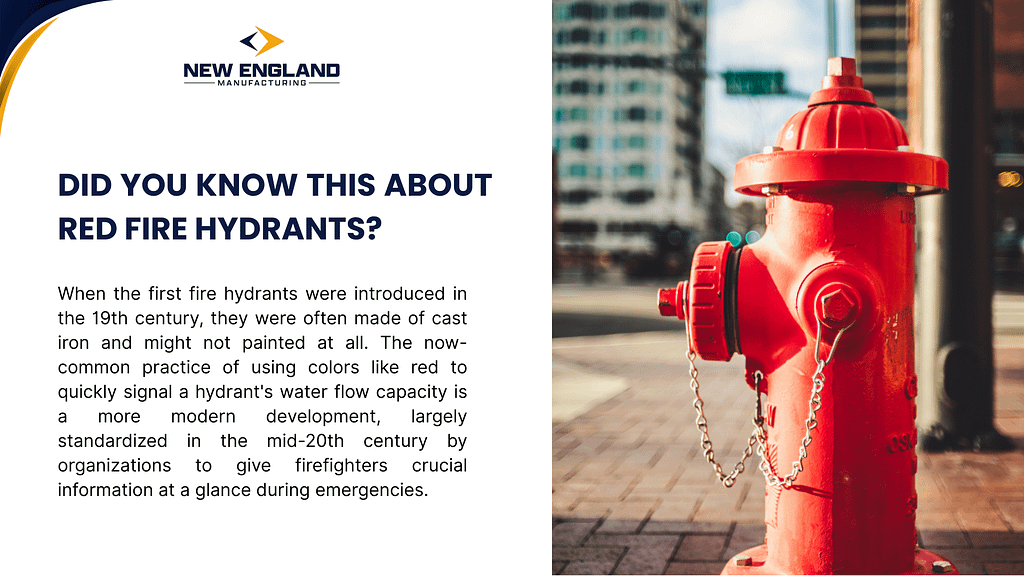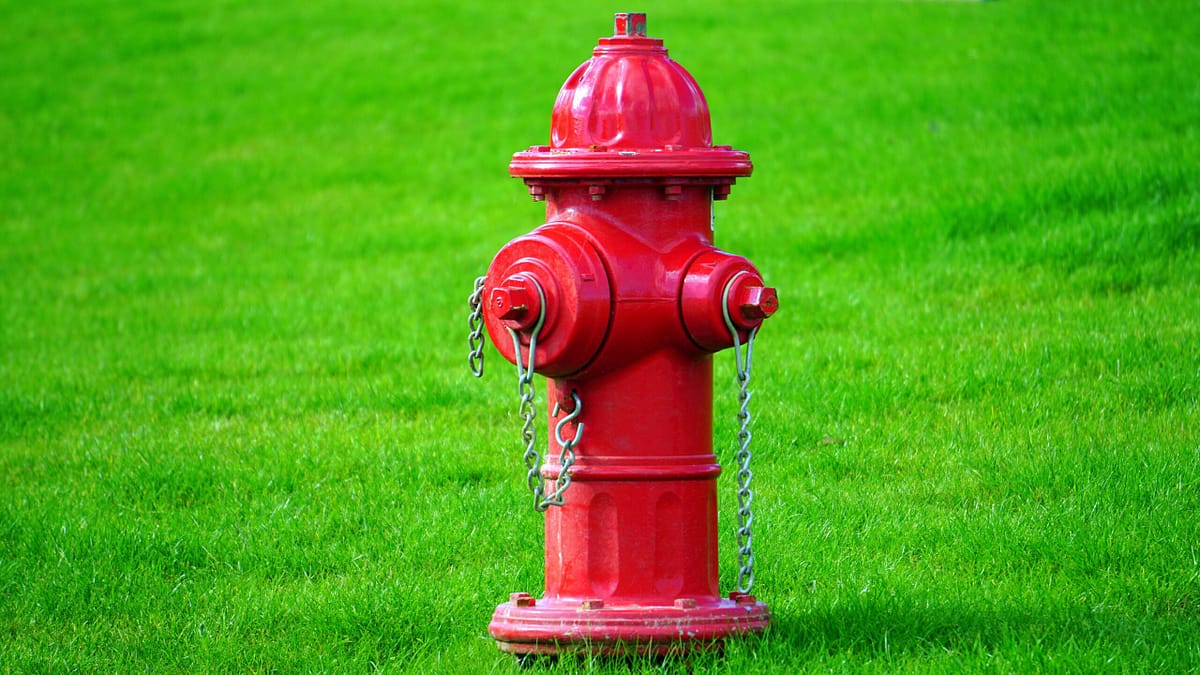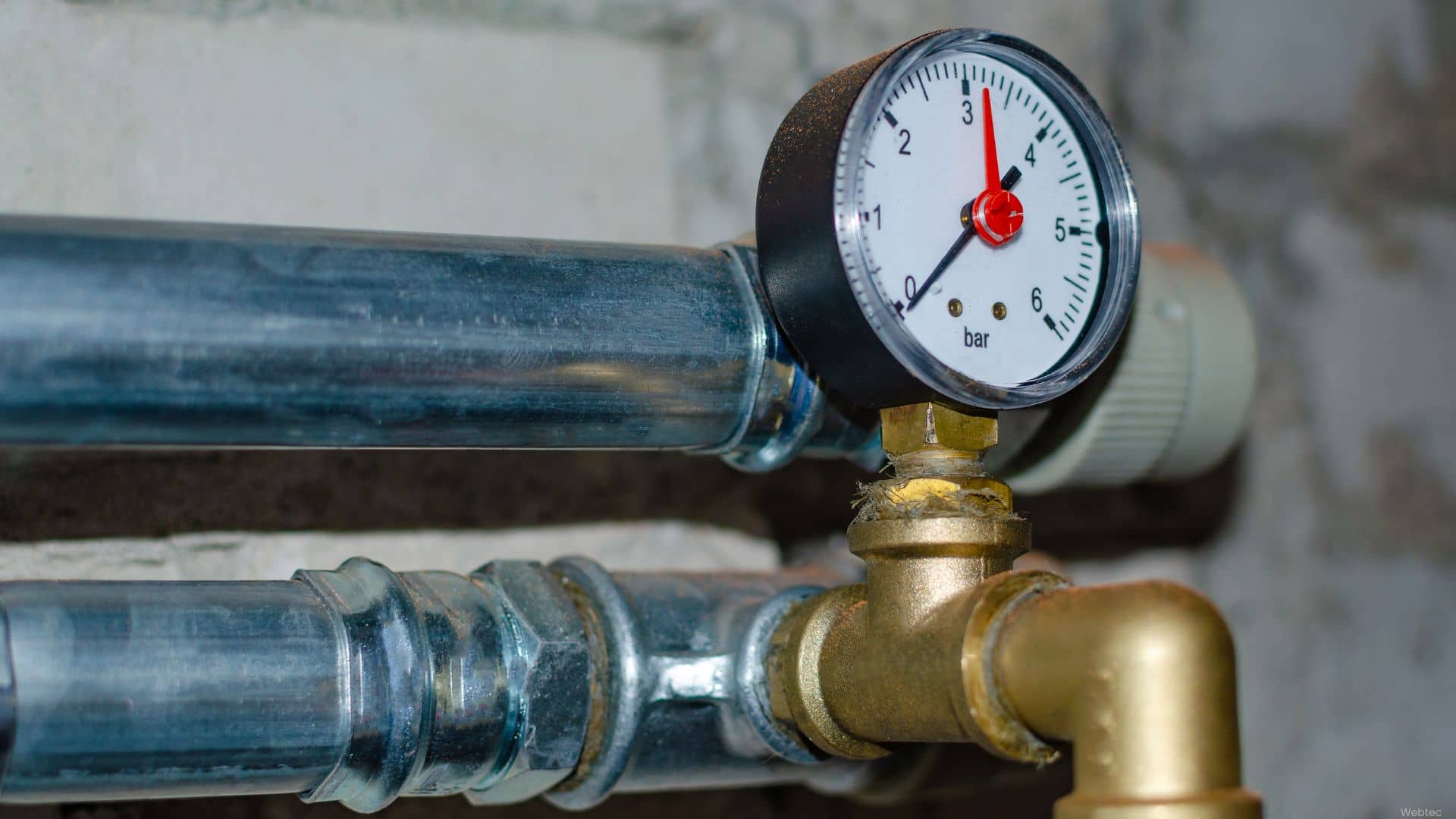Have you recently walked through a neighborhood and noticed many fire hydrants colored in red? Well, it might have caught your attention too. And probably the first thing that has come to your mind is: “What’s the purpose of painting a fire hydrant red?
The importance of a red fire hydrant, stands not only for firefighters which need it in a fire situation, but also for people who own buildings, manage properties, or are in charge of safety in a place.
In this article, we’ll look at what a red fire hydrant tells us based on common rules, including the amount of water it provides and why this is important for its use.

Why Fire Hydrants Have Color Codes
Think about a firefighter rushing to a building on fire. They need to know right away how much water pressure and flow they can get from the closest fire hydrant. Time is critical in an emergency.
Colors on fire hydrants act like a quick code. Groups that set fire safety rules, like the National Fire Protection Association (NFPA), have created these color systems. NFPA 291 is one of the main rulebooks for this.
This color code uses different colors, usually on the caps or the top part of the hydrant (called the bonnet), to show how much water the hydrant can provide in gallons per minute (GPM).
Even though the main body of many public hydrants is a standard color, the color of the caps is the key thing to look at to know the water flow amount based on this standard.
Understanding the general fire hydrant color code is important because different colors mean different amounts of water. Some hydrants can give a lot of water for big fires, while others give less. This color system helps firefighters pick the best hydrant to get enough water to fight a fire.
What the Red Fire Hydrant Cap Means (Based on NFPA Rules)
The red-colored caps indicate less water flow in the hydrant, as described by NFPA 291 for naming colors of public fire hydrants.
If the hydrants are red in color, they are categorized as NFPA class C, meaning that the supply of water is at a flow rate of less than 500 Gallon per Minute (GPM).
This tells you that a red fire hydrant gives a smaller amount of water compared to hydrants with other colors. It is best for smaller fires or when you don’t need a huge amount of water. If there’s a large fire, firefighters will look for hydrants with colors that mean higher water flow.
For example: A blue hydrant means very high flow (more than 1500 GPM), a green hydrant means high flow (1000-1499 GPM), and orange caps mean moderate flow (500-999 GPM). The red caps are the lowest group, giving less than 500 GPM

If you want to learn more about other fire hydrants, similar to the red one, you can check out our articles explaining the meaning of an orange fire hydrant.
Why Knowing About Your Red Fire Hydrant Is Important
If you own or manage a property, or even if you live near a red fire hydrant, understanding what it means is useful:
- Emergency Planning: If the red cap is supposed to mean low water flow, it actually assists in the planning of fire and emergencies. The firefighters should know how much water various hydrants near your property could provide for different kinds and scales of fires. A red fire hydrant nearby cannot provide enough water for a large fire.
- Following Codes: There are local safety codes that require fire hydrants to be properly identified and maintained on or near your property, and insurance companies also have their say in it.
Knowing the local code color-coding for fire hydrants makes it a lot easier for you to follow these codes and pass inspection. Otherwise, you could get into trouble if the colors are inappropriate or faded, or if the hydrant does not perform the way its color should indicate.
- Helping Firefighters: A red hydrant should provide some water (less than 500 GPM), and if it is blocked, broken, or suffering from pressure problems, it might have the worst effect on them regardless of what color it is.
To make sure that every hydrant on your property is colored correctly and works perfectly in emergency situations, getting help from flow testing professionals is the best thing you can do.
New England Manufacturing been operating for 100 years as the top #1 flow testing equipment company. We can help you figure out local color codes, check the condition of your hydrants, and make sure they meet all the rules and work correctly.

Conclusion: What the Red Fire Hydrant Tells You
Seeing a red fire hydrant gives you useful information. Most often, if it has red caps and follows NFPA rules for public hydrants, it means it’s a Class C hydrant with less than 500 GPM water flow, meaning a lower water supply. If the whole body is red, it might mean it’s a private hydrant or has special local rules, so you need to check local guidelines.
No matter if a red fire hydrant means low water flow or private ownership, it must be ready to work in an emergency for fire safety. Understanding the fire hydrant color code helps you know what to expect, but only professional checks, tests, and maintenance can truly make sure it will work when firefighters need it.
For over 100 years, New England Manufacturing has been known as the top #1 business for providing the best water system equipment. We also have the skills to make sure your fire hydrants work correctly and follow the rules.If you need expert help checking or taking care of your red fire hydrant or any other hydrant, so you don’t have to worry about following rules or if it will work when needed, trust NEMFG. Become part of our 80K happy customers by emailing us at sales@nemfg.com.





